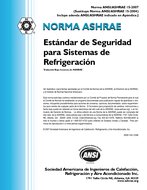Description
Click here to purchase
Natural ventilation as a passive strategy in buildings hasbeen increasingly studied in recent years for its potential advantagesto reduce building energy use and improve indoor environmentalquality (IEQ), especially during shoulder seasons (i.e.,transition months or colder summer days). This study investigatesthe energy impacts of natural ventilation in a mid-rise multifamilybuilding in Chicago, IL, using computational fluid dynamics(CFD) simulations and building energy modeling. Consideringweather conditions in Chicago, natural ventilation is assumed tobe applied only for the shoulder seasons (i.e., spring and fall). Tothis end, this study used (1) a coupled modeling method to simulatethe exterior environment to investigate the overall behaviorof outdoor airflow around the building, (2) a decoupled modelingmethod to simulate the detailed interior environment with variousopening scenarios to demonstrate natural ventilation effectiveness,(3) applied building energy models to evaluate the impact ofnatural ventilation on energy use compared to mechanical ventilation,and (4) performed a parametric analysis to explore variousnatural ventilation scenarios with different environmental controlset points, including minimum and maximum outdoor temperaturesand wind speeds. The CFD simulations showed that the ratesof wind-driven natural ventilation were estimated to be about8430 L/s (25.4 ACH) in the gym space and 1270 to 2050 L/s (4.8to 7.8 ACH) in the residential space at average shoulder seasonclimate conditions, depending on different ventilation scenarios,which satisfied the required ASHRAE Standard 62.1-2019 minimumventilation rates. The parametric study of building energysimulations indicated that natural ventilation can reduceseasonal building energy consumption by up to 30% (21,610kWh) and save about $1550 during the shoulder seasonscompared to the mechanical ventilation system.
Product Details
- Published:
- 2022
- Number of Pages:
- 12
- Units of Measure:
- Dual
- File Size:
- 1 file , 3.8 MB
- Product Code(s):
- D-LV-22-002
- Note:
- This product is unavailable in Russia, Belarus




